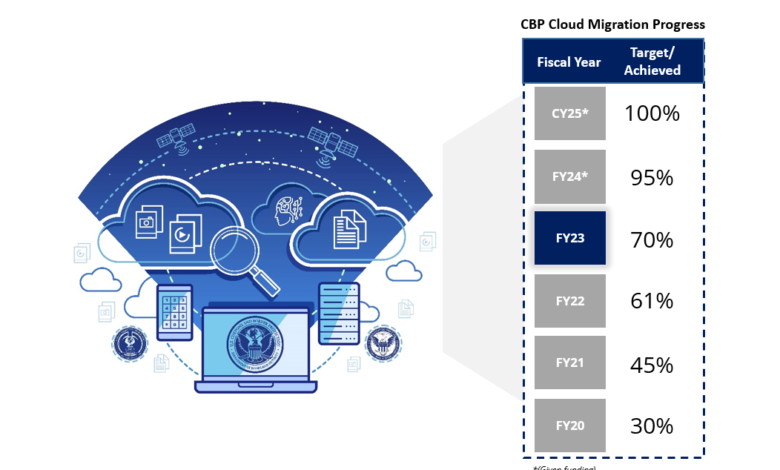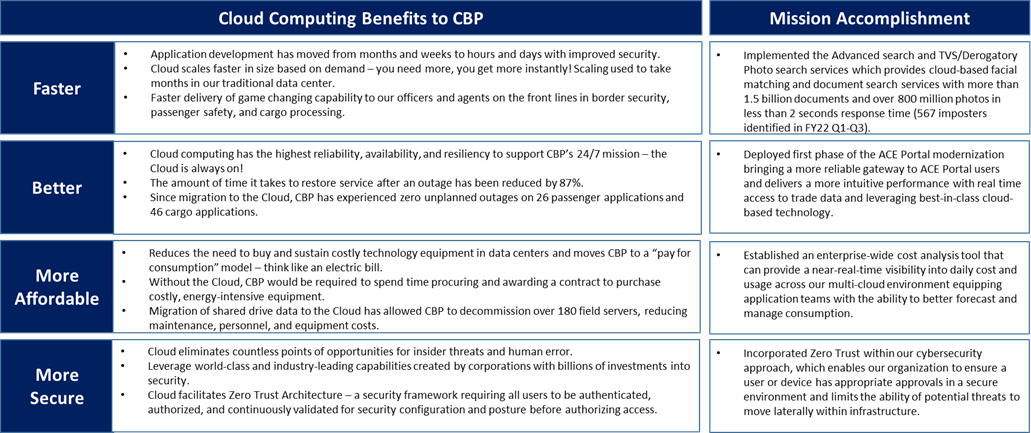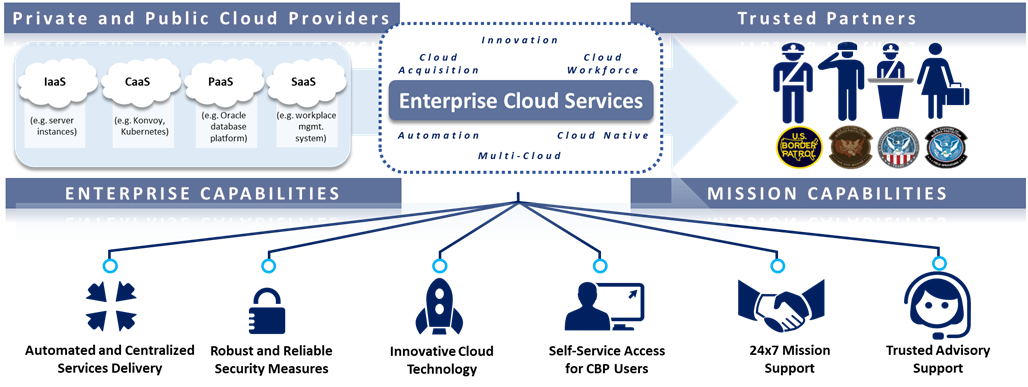OIT Paves The Way For CBP’s Cloud Future

U.S. Customs and Border Protection’s (CBP) Office of Information and Technology (OIT) strives to provide the best services and tools to fulfill CBP’s multifaceted operations at the speed of the mission. Cloud computing is one such service that is transforming CBP’s ability to meet the needs of the public. OIT has prioritized Cloud computing since 2017, and the benefits are so impactful that the federal government has since mandated its use.
Cloud computing is the on-demand delivery of computing power, servers, database storage, applications, and other IT resources delivered through a services platform via the internet. OIT will migrate 70% of CBP’s applications to the Cloud by the end of 2023 and plans to have all applications on the Cloud by Calendar Year (CY) 2025 given funding.
Migrating applications for an agency as big as CBP has proved a challenge, but one that the organization is rising to meet. “CBP is a large government agency doing great work in terms of size, scope, and complexity at scale,” said CBP Chief Information Officer and OIT Assistant Commissioner Sanjeev “Sonny” Bhagowalia. “It is one of the first civilian agencies at scale to accomplish this.”
The use of Cloud computing enables CBP to provide faster, better, more secure, and more affordable capabilities. Some of the specific ways that Cloud computing has benefited CBP include the following:
To support the use of the Cloud, OIT has established the Enterprise Cloud Services Division (ECSD). ECSD serves as a Cloud governance body with authority over Cloud infrastructure and Cloud services. ECSD plans and implements sustainable Cloud architecture and security. It coordinates mission stakeholders to ensure the architecture is in line with mission requirements and aligned with the Department of Homeland Security and CBP Strategic Plans. ECSD’s ecosystem is depicted in the chart below.
OIT Deputy Assistant Commissioner Ed Mays oversees the Enterprise Cloud Services Division and noted the wide-reaching benefits the CBP’s Cloud strategy will bring.
“The Cloud enables the CBP 24/7 Mission by delivering capabilities to our agents and officers in a better, faster, more affordable and more secure manner,” said Mays. “In addition, Cloud moves CBP from a sunk cost model to a utility/consumption model with greater data-driven insights into cost and improved governance. The new Enterprise Cloud Service Division will enhance service delivery by engaging our trusted partner and providing Cloud advice to drive best value performance and outcomes for CBP.”





